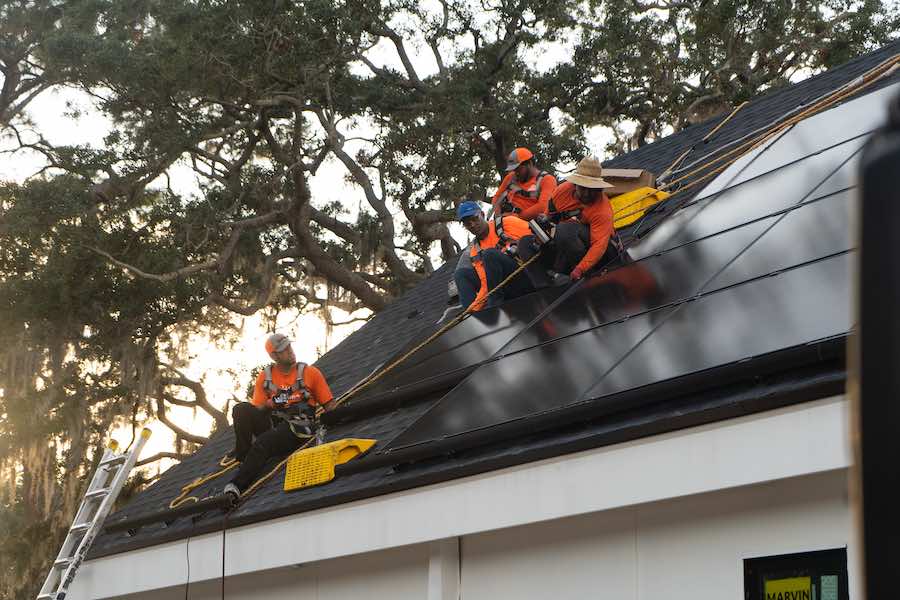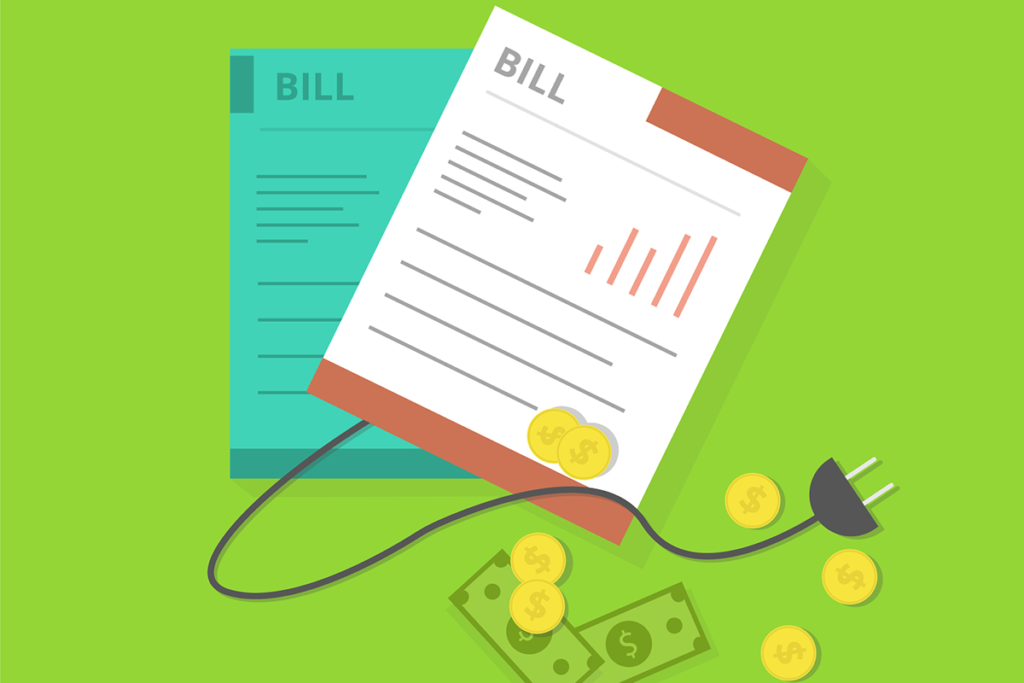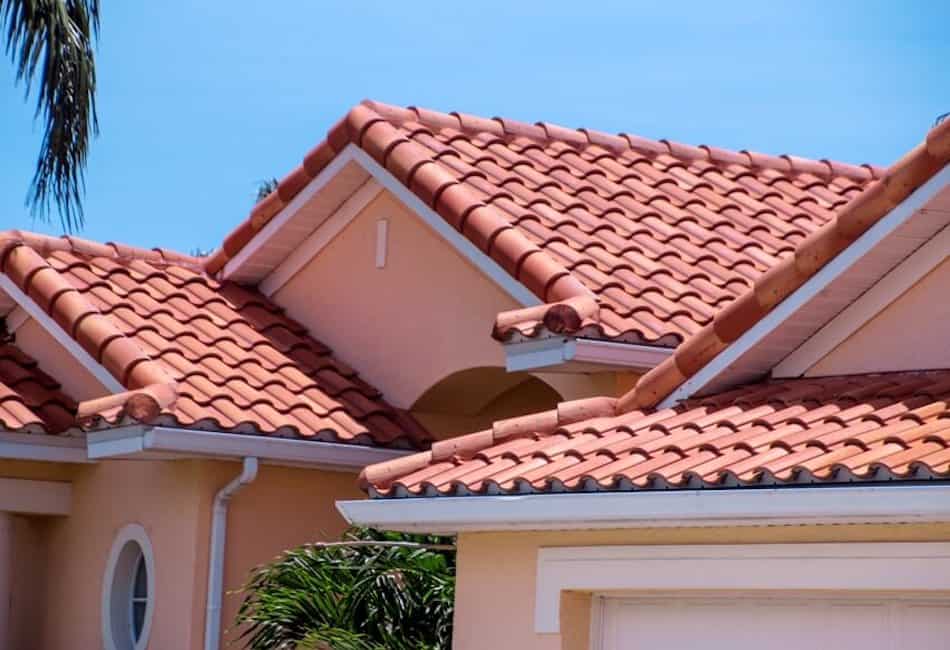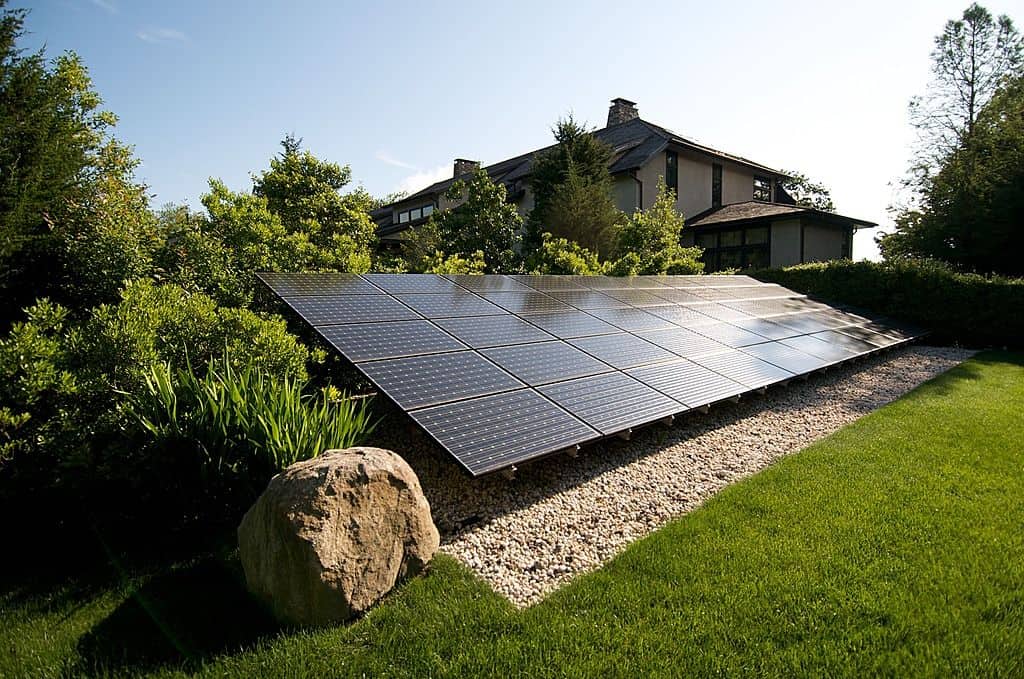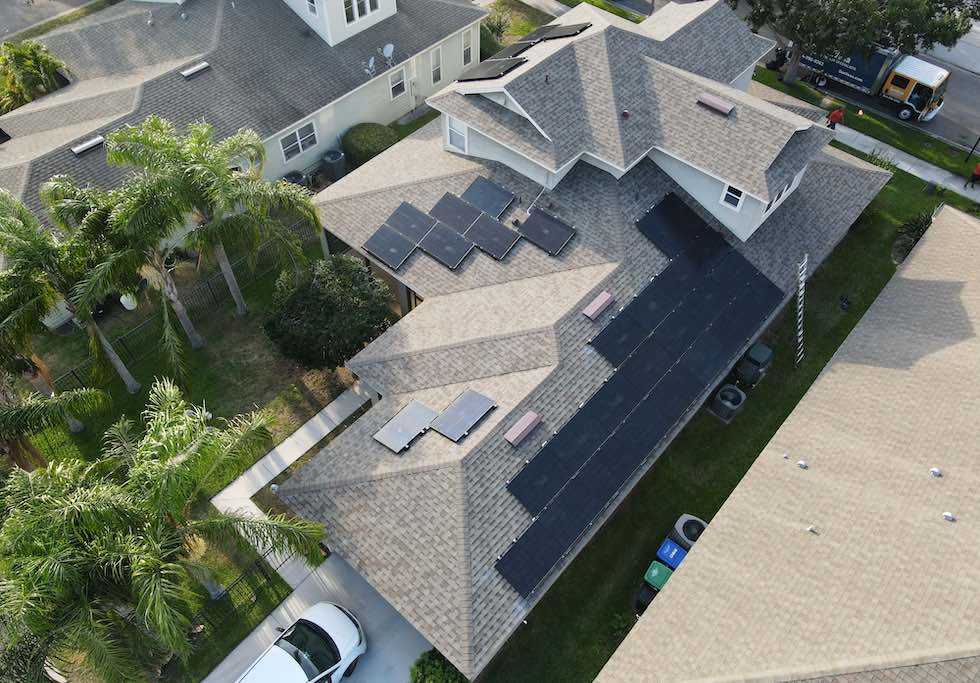
If you’re deciding whether or not to install solar panels on your home or business, it’s important to consider roof type, angle, direction, material, and pitch. These factors influence your property’s solar potential, i.e., how efficient and profitable your solar investment will be.
Let’s walk through the best roof types for solar panels, the ideal roof angle and direction, and more. This guide will help you make informed decisions to maximize your solar panel efficiency and savings.
Best Roofing Materials for Solar
When it comes to rooftop solar panel installation, not all roofing material is created equal. Solar panel mounting systems can be attached to most roof types. However, some roof materials are more suitable for solar panel installation. Here are the best types of roofing materials for rooftop solar panels.
Metal Roofing
Solar panels are well-suited for standing seam metal roofs. They’re durable, long-lasting, and don’t require drilling holes that penetrate the roof for installation because of their standing seams. In addition, metal roofing has a smooth surface that allows solar panels to be easily mounted without damaging the roof.
Tile Roofing
If you’re planning to install solar panels on a tile roof, you need to be careful not to damage the tiles or the panels. During the installation process, make sure to handle the tiles with care and ensure the roof can support the weight of the panels. It’s best to hire a professional who knows how to deal with tile roofs to get the job done right without any damage.
Asphalt Shingle Roofing
Asphalt roofs are one of the most common surfaces for solar panel installations due to their widespread use and compatibility with standard mounting systems. These shingle roofs offer a good balance between durability and ease of installation. Solar installers can securely attach mounting hardware directly into the roof structure without significant alterations, and the flexible nature of asphalt shingles helps create a weather-tight seal around the mounts. Additionally, the cost-effectiveness and accessibility of asphalt shingle roofing make it an attractive option for many homeowners looking to switch to solar energy.
Composite Shingle Roofing
Composite shingle roofs, known for their versatility and durability, are also well-suited for solar panel installations. These roofs are made from a mixture of fiberglass, recycled paper, and asphalt, offering a sturdy and reliable base for solar panels. The installation process involves attaching solar panel mounts directly to the roof structure, similar to asphalt shingles, and the composite material provides a stronghold for the mounting systems. Moreover, the inherent durability of composite shingles ensures that they can bear the weight and stress of solar panels over long periods, making them an excellent choice for homeowners looking to invest in solar energy.
Tar & Gravel Roofing
Tar and gravel roofs are relatively easy to install solar panels on since they are typically flat or low-pitched, which makes it easier to achieve the correct angle for maximum efficiency. These roofs are very durable and can withstand the weight of panels without additional structural support. Lastly, they are less prone to damage during installation than more fragile roofing materials like wood or slate.
Best Roof Angle for Solar Panels
The angle of your roof plays an important role in the energy efficiency of your solar panels. While roof pitch is commonly used to describe the slope, the actual angle in degrees relative to the sun ultimately determines optimal sunlight exposure. If your roof’s angle is too steep or shallow, your panels may not receive optimal sunlight exposure and won’t produce as much energy. The ideal roof angle for solar panels varies depending on your location, as it’s based on the latitude of your area and the angle of the sun’s rays. The most energy efficient and best roof angle for solar panels in Florida is between 28 and 35 degrees.
Steep Roofs
If your roof is over 40 degrees, your roof is considered “too steep,” and installing solar panels becomes less financially viable because of lower efficiency (longer payback periods), difficult installation conditions, and higher risk of wind uplift damage. If your roof falls into this category, alternative home solar solutions like ground-mounted solar panels or Tesla Solar shingles are worth exploring with solar installers.
Flat Roofs
A flat roof offers more surface area and flexibility for installation. While flat roofs themselves don’t have the ideal pitch, with proper ballast mounting systems, solar panels on a flat roof can be just as efficient, if not more so, than on sloped roofs. If you’re considering flat roof solar panels, special considerations should be taken to ensure proper drainage to prevent water pooling under the panels, which can damage the roof membrane and potentially lead to leaks. It’s important to consult with a professional solar panel installer so they can help assess your roof’s suitability and provide guidance on the best solar system setup for maximum energy production and savings.
Solar Panel Mounting
While the ideal roof angle helps optimize your solar energy systems production, the story doesn’t end there. Well-designed solar panel mounts can give your panels the tilt and elevation needed to achieve the ideal adjusted angle on almost any roof to capture the most sunlight throughout the day.
Best Roof Direction for Solar Panels
In the northern hemisphere, specifically in Florida, the best direction for your roof to face with solar panels is South. The roof’s orientation affects how much sunlight the panels receive throughout the day, affecting their efficiency and power production. In addition to direction, it’s important to consider shading. Trees, buildings, and other obstructions can block sunlight and reduce the efficiency of your solar panels.
East-West Facing Roofs
While not as perfect as south, east-west roofs can still generate good energy production. East-facing panels catch the morning sun, while west-facing panels get the stronger afternoon sunshine. However, you’ll likely see a slight decrease in overall output compared to the South. Solar installations with East or West facing roofs will angle panels to the South to increase production.
North-Facing Roofs
In Florida’s southern latitudes, even north-facing solar systems can produce decent energy, especially if there’s minimal shading. However, expect significantly lower output compared to south-facing installations.
Roof Age & Condition
When considering solar panel installation, the age and condition of your roof are critical factors to consider. An older roof nearing the end of its lifespan might require replacement before adding solar panels to avoid the additional cost and hassle of removing and reinstalling the panels during a roof replacement. The condition of the roof is equally important; it should be structurally sound and free of damage like leaks or significant wear, as these issues can affect the performance and installation process of the solar panels. If your roof isn’t structurally sound and doesn’t have 7-8 years of life left, you should consider waiting to install solar panels at the time or after you replace your roof.
Roof Sunlight Exposure & Shading
Additionally, the sun exposure the roof receives is a key determinant of the solar system’s efficiency. Roofs with minimal shading from trees or nearby structures and those oriented towards the sun (south-facing in the Northern Hemisphere and north-facing in the Southern Hemisphere) are ideal for maximizing solar energy production. Evaluating these aspects ensures your roof is well-prepared for a successful and efficient solar panel installation.
How to Choose a Good Solar Roofing Professional
Choosing a quality solar energy company to install panels is essential in ensuring clean energy systems, optimal performance, and longevity of your solar panel system, no matter what kind of roof you have. With so many solar panel installers in the market, knowing what to look for can be challenging. Here are some tips on how to choose a quality solar panel installer.
- Licenses and Certifications: Check that the installer has the necessary licenses, certifications, and insurance to operate in your state. This includes a Contractor’s license, Electrical license, general liability, and worker’s compensation insurance.
- Experience: Choose an installer who has a track record of successful installations in your area. Reviews and references from previous customers and samples of their work can tell you a lot about a company.
- Warranty: Choose an installer that offers a comprehensive warranty on their work and the equipment they install. A good warranty will protect you from unexpected costs and ensure the installer stands behind their work.
- Financing Options: If cost is a concern, consider an installer that offers financing options or partnerships with solar loan providers. This can make it easier to afford the upfront costs of a solar panel system.
- Customer Service: Good customer service makes everything easier. Check how quickly companies respond to questions and concerns. Ask if they offer ongoing support after installation. Consider these factors when evaluating service.
- Transparency: Solar is a huge investment for a homeowner. The last thing you want is unexpected costs and fees. Look for a solar company that’s transparent about the solar system installation process, costs, and expected performance. A good installer will be honest and upfront about what you can expect from your system.
Installing Solar Panels on Your Florida Home
If you’re considering installing solar, contact SunVena Solar to get a free quote. As Florida’s leading solar installation company, we have the expertise and experience to help you design and install a high-quality solar panel system that meets your needs and fits your budget. Our team of certified solar professionals is committed to providing top-notch service and support to ensure that your solar panel system operates at peak efficiency for years to come.
